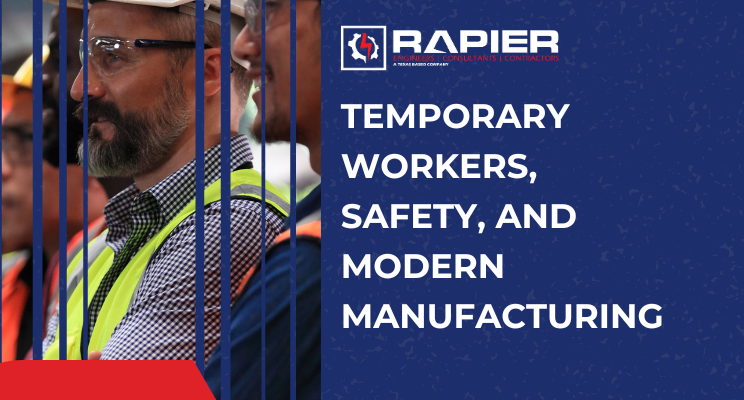In modern manufacturing, temporary workforce solutions and the use of staffing partners is almost a foregone conclusion. The struggle to find competent and committed employees is real across the entirety of the American work force. These workers play a crucial role in helping manufacturers meet fluctuating demands, tackle specialized projects, and maintain flexibility in their workforce. However, amidst the hustle and bustle of day-to-day operations, it’s essential for both host employers and staffing agencies to prioritize the safety and health of temporary workers. In this article, we’ll explore the OSHA rules regarding temporary workers and the joint responsibility both parties bear in ensuring a safe and secure workplace.
OSHA’s General Duty Clause and Its Application
The Occupational Safety and Health Administration (OSHA) enforces the General Duty Clause, which mandates that employers provide a workplace free from recognized hazards that could cause serious injury or death to employees. This clause applies to all workers, including temporary employees. As a result, host employers must identify and address potential hazards, regardless of the worker’s employment status.
Defining Responsibilities: Host Employers and Staffing Agencies
Manufacturers and staffing agencies must clearly define their respective responsibilities when it comes to the safety of temporary workers. Communication and collaboration between both parties are essential to establish a cohesive safety program. The host employer typically has more control over the workplace environment, equipment, and tasks assigned, while the staffing agency plays a role in training, skill verification, and ensuring workers are qualified for the assigned roles.
Comprehensive Safety Training and Orientation
Before temporary workers commence their duties, employers and staffing agencies should provide comprehensive safety training and orientation. This should include information on specific hazards in the workplace, safe work practices, emergency procedures, and proper use of personal protective equipment (PPE). By empowering temporary workers with knowledge, employers contribute to a safer work environment and reduce the risk of accidents.
Record Keeping and Reporting: A Joint Effort
OSHA requires employers to maintain injury and illness records for all employees, including temporary workers. Manufacturers and staffing agencies should work together to ensure accurate record keeping and timely reporting of any workplace injuries. This collaboration not only complies with OSHA regulations but also helps identify trends and implement preventive measures to reduce future incidents.
Hazard Communication Programs
Host employers and staffing agencies should work together to ensure proper labeling of hazardous materials and provide safety data sheets (SDS) to temporary workers. A robust hazard communication program allows employees to understand the potential risks associated with the chemicals they handle, promoting a safer work environment.
Creating a Culture of Safety Through Shared Responsibility
By sharing the responsibility for the safety and health of temporary workers, both host employers and staffing agencies create a culture of safety that benefits everyone involved. Holding all parties accountable for their roles reinforces the commitment to a safe workplace and fosters a positive working relationship.
The collaboration between manufacturers and staffing agencies is vital for ensuring the safety and well-being of temporary workers in the manufacturing industry. By adhering to OSHA regulations, providing comprehensive training, and fostering open communication, both parties can create a safer work environment that benefits everyone involved. Prioritizing the safety of temporary workers not only enhances compliance but also contributes to increased productivity, reduced absenteeism, and improved employee morale. Together, we can build a workplace where every worker returns home safely at the end of the day.


